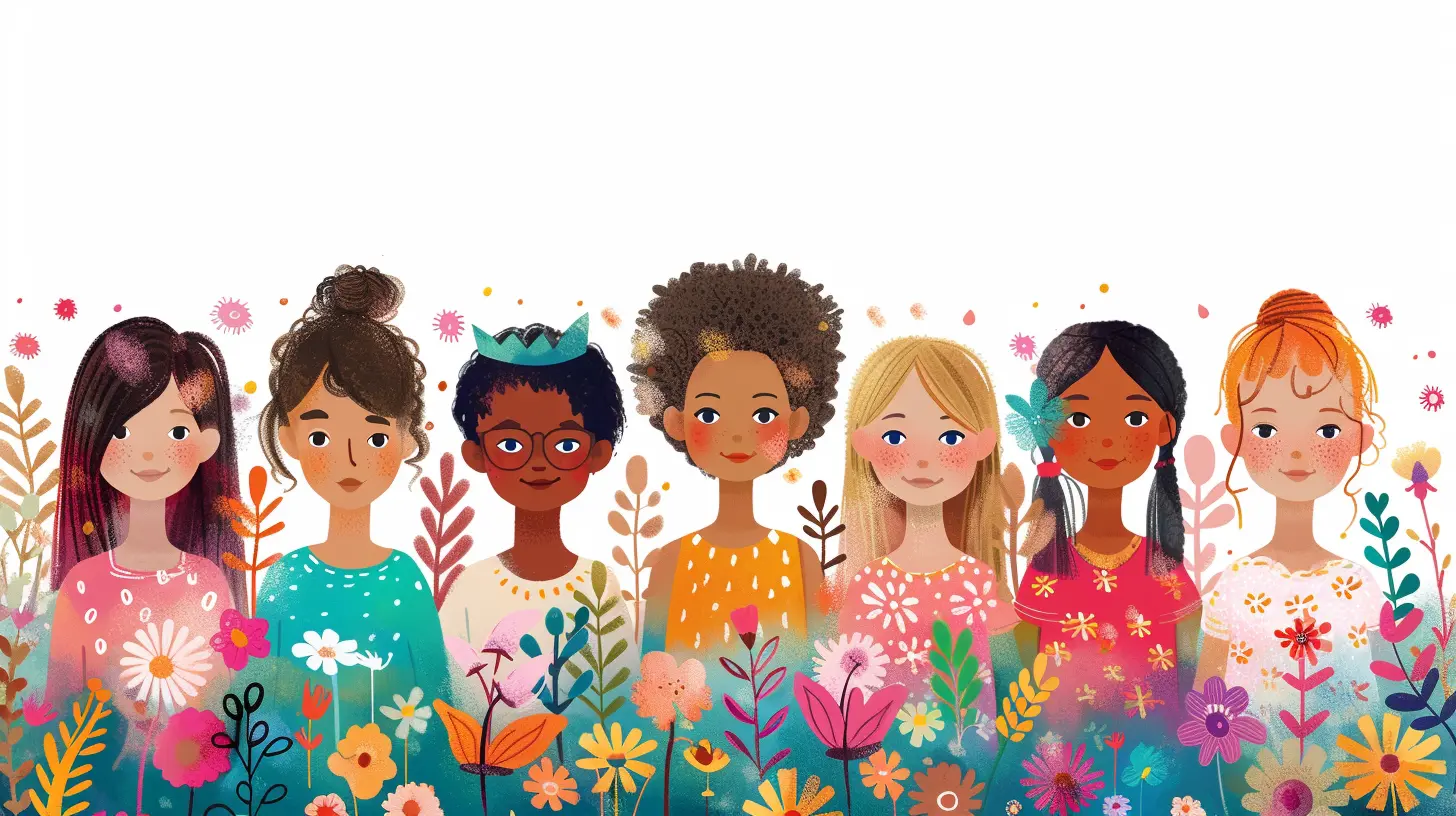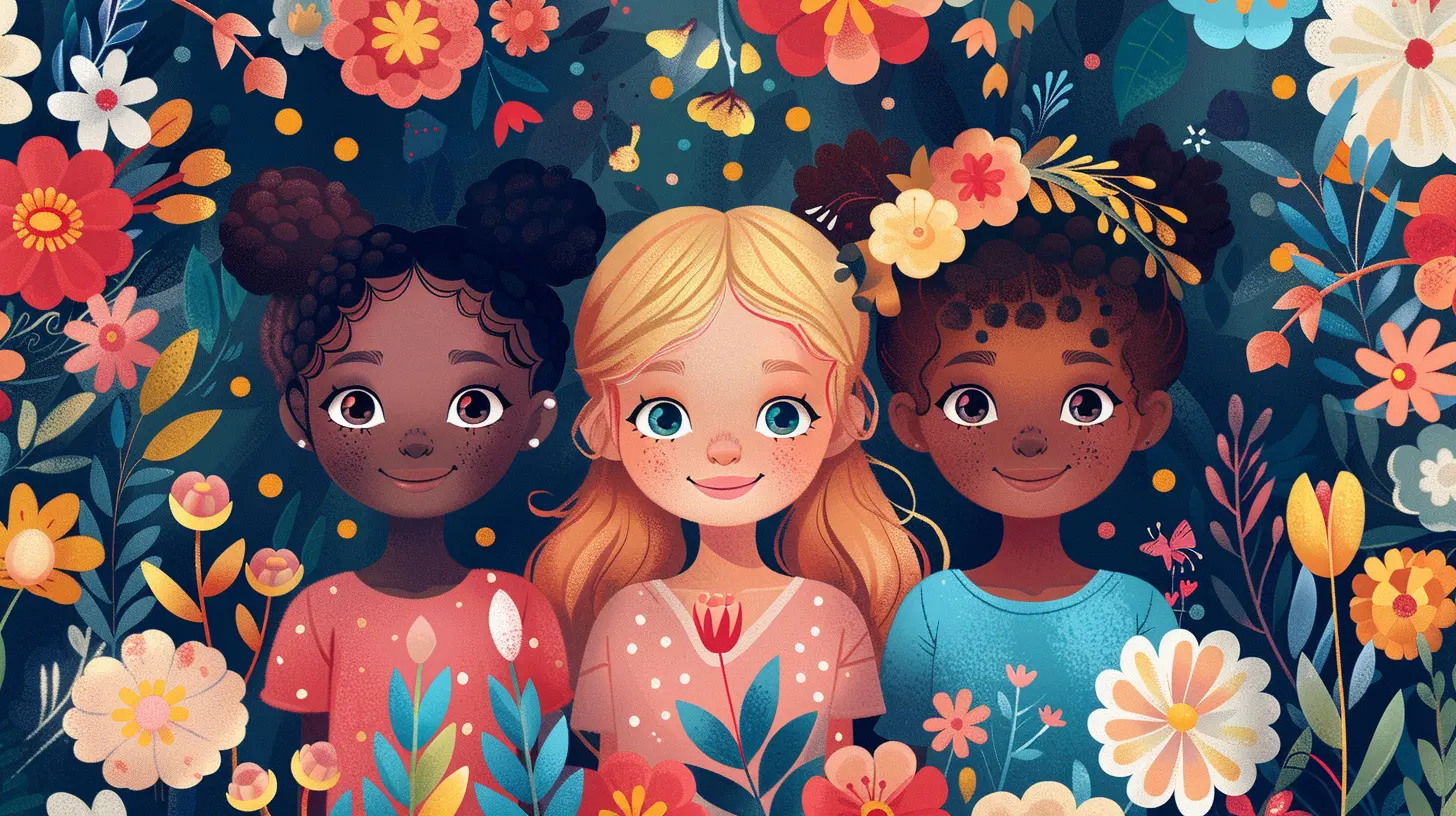How to Talk to Your Daughter About Diversity and Inclusion
15 April 2025
Talking to your daughter about diversity and inclusion is one of the most important conversations you'll ever have. The way she sees and interacts with the world is shaped by what she learns at home. As parents, we have the power to raise kind, empathetic, and inclusive children who embrace differences rather than fear them.
But how do you start? How do you break down these big, complex topics into conversations that make sense to a young mind? Let’s walk through it together.

Why These Conversations Matter
The world is a beautifully diverse place—different races, cultures, religions, abilities, and identities all make up the fabric of society. Teaching your daughter about diversity and inclusion isn’t just about being "politically correct"—it’s about preparing her to thrive in a multicultural world.Kids are naturally curious. If we don’t address their questions about differences, they may fill in the gaps with stereotypes or misinformation. By having open, honest conversations early, we give them the knowledge and empathy needed to treat everyone with kindness and respect.

When to Start Talking About Diversity
It’s never too early to talk about diversity. Even toddlers notice differences in skin color, hair texture, and language. Studies show that kids begin forming biases as early as age three. That means waiting until they’re older is a missed opportunity.Instead of treating diversity like a one-time lecture, weave it into your everyday life. The goal is to raise a child who doesn't just tolerate differences but truly embraces them.

How to Talk to Your Daughter About Diversity and Inclusion
1. Lead by Example
Actions speak louder than words. If you want your daughter to be inclusive, she needs to see you practicing what you preach.- Do you have friends from different backgrounds?
- Do you celebrate cultural differences in your everyday life?
- Do you challenge stereotypes and prejudices when you hear them?
Children are always watching. If you embrace diversity in your own life, she will naturally follow suit.
2. Normalize Differences Early
Make diversity a normal part of your conversations. When she asks why someone’s skin is darker or why a friend’s parent speaks another language, answer her honestly and positively.Instead of saying, "We don’t talk about that," respond with curiosity and warmth:
- "People have different skin tones because of the amount of melanin in their bodies. Isn’t it cool how we all look different?"
- "Some families speak different languages at home. Isn’t it amazing how people can communicate in so many ways?"
By treating differences as normal, you teach her that they’re not something to be feared or avoided.
3. Encourage Questions (And Answer Them Honestly)
Kids ask tough questions. "Why does that person use a wheelchair?" or "Why does she wear a headscarf?" may catch you off guard, but don’t shut them down.Instead, encourage curiosity. A simple, respectful answer can go a long way:
- "Some people’s bodies work differently, so they use wheelchairs to move around. It helps them just like our legs help us."
- "Some people wear headscarves as part of their religion. It’s a way of showing their faith, just like how others wear crosses or other symbols."
By giving her honest answers, you help her build a foundation of understanding and respect.
4. Read Books and Watch Shows That Promote Diversity
Books and media shape the way our kids see the world. Make sure your daughter is exposed to stories with diverse characters—heroes who don’t all look the same, families that come in all forms, and different cultural celebrations.Some great books to add to her collection:
- Sulwe by Lupita Nyong'o (A beautiful story about self-love and embracing differences)
- The Name Jar by Yangsook Choi (Explores cultural identity and the importance of names)
- All Are Welcome by Alexandra Penfold (Shows an inclusive school where everyone belongs)
Watching TV shows and movies with diverse characters also reinforces inclusivity. From Doc McStuffins to Encanto, the media can be a powerful ally in teaching these lessons.
5. Celebrate Different Cultures in Your Daily Life
Inclusion isn’t just about talking—it’s about doing. Bring diversity into your home by introducing your daughter to different cultures and traditions:- Try foods from different countries: Cook Mexican tacos, Indian curry, or Japanese sushi together.
- Attend cultural events: Festivals, parades, and community events are fun ways to experience diversity firsthand.
- Learn basic words in other languages: Even simple greetings in Spanish, Mandarin, or Swahili can open up conversations about different cultures.
These small, everyday experiences make diversity feel normal rather than something "different."
6. Teach Her to Stand Up Against Discrimination
Understanding diversity is one thing—standing up for others is another. Teach your daughter to speak up when she sees someone being treated unfairly.If a friend makes a hurtful comment about someone's race, religion, or abilities, she should feel empowered to say, "That’s not okay." Encouraging her to be an ally from a young age sets the stage for lifelong advocacy.
Role-playing different scenarios can help:
- "What would you do if a classmate teased someone for having an accent?"
- "How would you respond if someone made a mean comment about another person’s skin color?"
By practicing these conversations at home, she’ll feel more confident speaking up in real life.
7. Address Your Own Biases
We all have unconscious biases. The key is to recognize them and work to change them.If you find yourself making assumptions about people based on their background, pause and reflect. How you handle your own biases sets the tone for your daughter’s learning.
It’s okay to admit when you don’t know something. If a question stumps you, say, "That’s a great question! Let's find the answer together." This models humility and a willingness to learn.
8. Teach Empathy Through Real-Life Experiences
One of the best ways to teach empathy is through exposure. Encourage friendships with kids from different backgrounds, visit places of worship different from your own, and volunteer together in diverse communities.When kids see people as individuals rather than "others," stereotypes start to break down.
9. Keep the Conversation Going
Diversity and inclusion aren’t one-time topics—they’re lifelong conversations. As your daughter grows, so will her understanding of these concepts.- Keep asking her what she thinks.
- Encourage her to share her experiences.
- Revisit these discussions often.
Making diversity and inclusion an ongoing part of her life ensures that the values of respect and kindness stay with her forever.

Final Thoughts
Talking to your daughter about diversity and inclusion isn’t about having all the right answers—it’s about creating a space where she feels safe to ask questions, explore new ideas, and embrace differences.By leading with curiosity, honesty, and empathy, you’re shaping her into a compassionate and inclusive human being. And in a world that sometimes feels divided, we need more of that.
all images in this post were generated using AI tools
Category:
Raising GirlsAuthor:

Steven McLain
Discussion
rate this article
5 comments
Haven Cannon
In whispered tones of love and light, Teach her the beauty in every sight. With open hearts, let stories flow, Embrace the world, let understanding grow. Together, hand in hand, let kindness show.
May 21, 2025 at 4:26 PM

Steven McLain
Thank you for beautifully capturing the essence of teaching love and understanding. Your words perfectly reflect the importance of embracing diversity and fostering kindness in our conversations with daughters.
Marie McCallum
Engaging in open dialogues about diversity fosters empathy and understanding, shaping a compassionate worldview for our daughters.
May 5, 2025 at 3:58 AM

Steven McLain
Absolutely! Open dialogues are essential in nurturing empathy and creating a more inclusive mindset in our daughters.
Isabella McMichael
Such a crucial topic! Honest conversations can really empower our daughters to embrace differences.
April 19, 2025 at 4:13 AM

Steven McLain
Thank you! Open dialogues are key to fostering understanding and acceptance.
Sorin Sweeney
Empower her to see differences as strengths, not obstacles. Start conversations that celebrate diversity, encourage curiosity, and foster empathy—each chat is a building block for her understanding and acceptance.
April 18, 2025 at 4:28 PM

Steven McLain
Thank you for your insightful comment! Empowering our daughters to embrace diversity as a strength is crucial in fostering understanding and empathy. Conversations truly are the foundation for a more inclusive mindset.
Zora McGlynn
Great tips! Essential convo for our kids' futures!
April 15, 2025 at 3:40 PM

Steven McLain
Thank you! I'm glad you found the tips valuable for empowering our kids.




